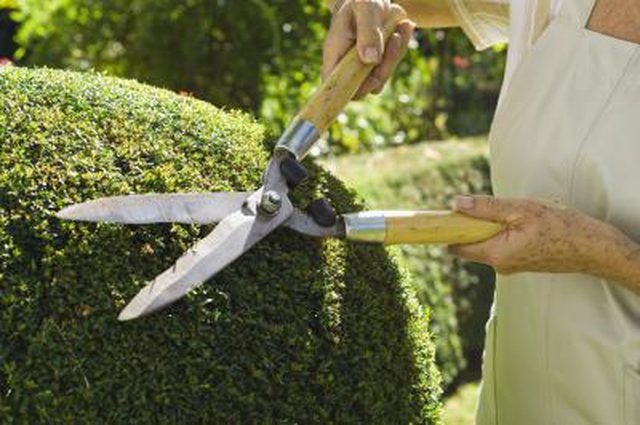Bulbs
Flower Basics
Flower Beds & Specialty Gardens
Flower Garden
Garden Furniture
Garden Gnomes
Garden Seeds
Garden Sheds
Garden Statues
Garden Tools & Supplies
Gardening Basics
Green & Organic
Groundcovers & Vines
Growing Annuals
Growing Basil
Growing Beans
Growing Berries
Growing Blueberries
Growing Cactus
Growing Corn
Growing Cotton
Growing Edibles
Growing Flowers
Growing Garlic
Growing Grapes
Growing Grass
Growing Herbs
Growing Jasmine
Growing Mint
Growing Mushrooms
Orchids
Growing Peanuts
Growing Perennials
Growing Plants
Growing Rosemary
Growing Roses
Growing Strawberries
Growing Sunflowers
Growing Thyme
Growing Tomatoes
Growing Tulips
Growing Vegetables
Herb Basics
Herb Garden
Indoor Growing
Landscaping Basics
Landscaping Patios
Landscaping Plants
Landscaping Shrubs
Landscaping Trees
Landscaping Walks & Pathways
Lawn Basics
Lawn Maintenance
Lawn Mowers
Lawn Ornaments
Lawn Planting
Lawn Tools
Outdoor Growing
Overall Landscape Planning
Pests, Weeds & Problems
Plant Basics
Rock Garden
Rose Garden
Shrubs
Soil
Specialty Gardens
Trees
Vegetable Garden
Yard Maintenance
How to Prune Canadian Hemlock
How to Prune Canadian Hemlock. Best planted in a moist, acidic soil that has good drainage, the Canadian hemlock (Tsuga canadensis) may reach a height of 80 feet and a spread of 30 feet. The tree can be pruned annually to keep it smaller and even formed into a sheared hedgerow. Or, choose cultivars that mature to much smaller sizes to reduce the...

Best planted in a moist, acidic soil that has good drainage, the Canadian hemlock (Tsuga canadensis) may reach a height of 80 feet and a spread of 30 feet. The tree can be pruned annually to keep it smaller and even formed into a sheared hedgerow. Or, choose cultivars that mature to much smaller sizes to reduce the need for pruning. When hemlock plants are young they tolerate shade well, but as they grow, more sunlight is needed to prevent leggy growth and abortion of lower branches that must be removed. Grow Canadian hemlock in wind-protected areas across USDA winter hardiness zones 4 through 7.
Things You'll Need
Shears (hand-held or power)
Hand pruners (secateurs)
Loppers
Pruning saw
Remove dead branches or those that are hazardous (low-hanging over a walkway or driveway) using a hand pruner if branches are less than 1/2 inch in diameter. Larger branches are best cut with a lopper. Branches that must be removed from the point of attachment on the trunk should be cut with a hand-held pruning saw. Dead and hazardous branches can be pruned any time of year as necessary.
Wait until spring to conduct an overall pruning to shape the hemlock or maintain it as a sheared hedge. The University of Rhode Island simply states to prune in spring, but the American Horticultural Society's "A-Z Encyclopedia of Garden Plants" explicitly recommends waiting until midsummer to prune. This permits new needles to grow and mature before you trim, potentially creating a denser, larger plant that can then be sheared back to the desired size.
Use hand-held or power shearers to clip the branch tips on hemlock hedges. Trim away short lengths with the shears across the plant, removing clippings that are 1/2-inch to 1-inch long. Repeat the shearing little by little until you attain the effect you want. Avoid pruning back into bare twigs and branches that are devoid of needles: Regrowth of needles may not occur.
Reduce errant, long branches of the hemlock with the pruners or loppers. Make the pruning cut 1/4 inch to 1/2 inch above a lower branch joint or twiggy spray of needled branches to conceal the wound and maintain the natural, drooping gracefulness of the hemlock.
Tips & Warnings
To help keep lower branches on the hemlock from producing fewer needles and becoming leggy, cut branches that are higher up back further so light better reaches the lower branches. On hedges, this means tapering the shearing from the plant's top to a slightly wider baseómuch like an A-frame.
Use restraint when pruning hemlocks, especially specimen trees. Remember that it is better to trim smaller pieces and progress further with additional cuts than to hack out large areas that cannot be restored.
Because many insect pests and fungal diseases can afflict hemlock plants, consider spraying pruning blades with rubbing alcohol frequently, especially between trees, to prevent accidental spread of bugs or pathogens.